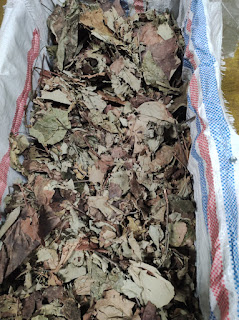Waru Leaf benefits for health
Latin Names and Plant Origins
Hibiscus leaves come from a plant with the scientific name Hibiscus tiliaceus, which is included in the Malvaceae family. This plant is often found in tropical and subtropical areas, especially in Asia, the Pacific and the beaches of Indonesia. Waru, also known by other local names such as "sea hibiscus," often grows in coastal areas, mangrove forests and beaches with fairly damp soil conditions.
Waru leaves have various chemical contents that are beneficial for health, including:
1. Alkaloids – These compounds are known to have analgesic (pain reliever) and anti-inflammatory effects.
2. Saponin – Known to lower cholesterol levels in the blood and has antibacterial and antifungal properties.
3. Tannin – Known for its antioxidant properties that help fight free radicals in the body.
4. Flavonoids – Compounds that have antioxidant, anti-inflammatory potential and also play a role in fighting infection.
5. Phenolic acid – Known for its antimicrobial properties that help fight infections in the body.
Apart from that, waru leaves also contain vitamin C, minerals such as calcium and potassium, as well as fatty acids which are important for the body.
Health Benefits of Waru Leaves
Waru leaves have long been used in traditional medicine in various cultures because of their diverse medical properties. Some of the health benefits that can be obtained from waru leaves include:
1. Overcoming digestive problems
Waru leaves can be used to treat digestive disorders, such as diarrhea and stomach ache. The tannin and saponin content in waru leaves is believed to speed healing and reduce inflammation in the digestive tract.
2. Anti-inflammatory and pain reliever
Waru leaves also have anti-inflammatory effects which can help relieve inflammation and pain, such as arthritis. This property is often used in traditional medicine to relieve swelling and pain.
3. Overcoming infections
With its alkaloid and flavonoid content, waru leaves have the ability to fight various infections, both caused by bacteria and fungi. Waru leaf extract is used as an antiseptic to clean wounds and prevent infection.
4. Maintain healthy skin
Waru leaves are often used as a natural ingredient in skin care. The antioxidant content in waru leaves can help speed up the regeneration process of skin cells and fight free radicals that can damage the skin. Apart from that, waru leaves are also believed to help overcome skin problems such as acne and skin irritation.
5. Lowers Cholesterol Levels
The saponin content in waru leaves is known to help reduce cholesterol levels in the blood, which is useful for preventing heart disease and stroke.
6. Improves respiratory tract health
Waru leaves can also be used to relieve symptoms of respiratory diseases, such as coughs, asthma or flu. The anti-inflammatory and expectorant properties of waru leaves can help clear the respiratory tract and reduce inflammation.
7. Improves Eye Health
The vitamin C and antioxidant content in waru leaves can help maintain eye health, prevent damage caused by free radicals, and reduce the risk of degenerative eye diseases such as cataracts.
How to Use Waru Leaves
Waru leaves can be used in various forms, from boiling, making an infusion, to processing them into an ointment. Here are some traditional ways of using waru leaves:
- Waru Leaf Tea: Boil several waru leaves in water to make a tea that can help relieve digestive disorders and respiratory problems.
- Waru Leaf Ointment: Crushed or mashed waru leaves can be applied to sore or injured body parts to help speed healing and reduce pain.
- Waru Leaf Compress: Boiled waru leaves can be used to compress swollen or inflamed parts of the body.



Comments
Post a Comment